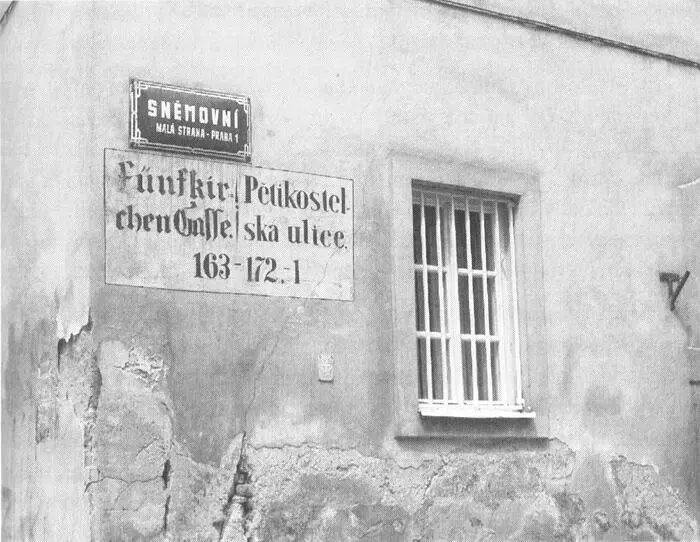
Photo © Terje B. Englund
During their 700 year presence in Bohemia and Moravia, the Germans have left so many traces that it’s hard today to say what’s originally Czech and what’s German.
Just look at Bohemia’s cities. Nobody doubts that Prague and the Hussite stronghold Tábor were founded by Slavs. But names like Nymburg (Neuenburg), Šumperk (Schönberg), Kolín (Köln) and Varnsdorf reveal that these cities’ first inhabitants almost certainly were of Germanic origin. It’s not that clear who the first settlers in Karlovy Vary (Carlsbad), Liberec (Reichenberg), Cheb (Eger) and Domažlice (Tauss) was, but it’s unquestionable that these cities were completely dominated by Germans right up until 1945 (see: Munich Agreement).
As one might expect in nationalism-ridden Central Europe, several Bohemian cities that were originally dominated by Germans were in 1918 given not only Czech-sounding names (Budweis became Budějovice), but were also equipped with the adjective Czech — as in Český Krumlov. Is this an attempt to falsify history? No, it’s a verbatim translation of the original German name — Böhmisch Krumau .
The interesting thing, though, is that Böhmisch in German only refers to geography, i.e. the city is located in Bohemia and not Bavaria, and does not say anything about the inhabitants’ ethnic origin. Similarly, the German term Böhme means simply a person who lives in Bohemia, and might ethnically be a Czech, a German or even a person who didn’t care about his nationality. However, Český and Čech , the equivalent terms, do not leave any room for a German element.
The German influence on Czech culture is expressed even more strongly by the nearly half million people with surnameslike Müller, Bauer and Töpfer, or with Germanic surnames masked by Czech orthography (Šubrt). Peculiarly enough, Honza , the most Czech of all Czech Christian names, is actually German Hans . True, a German-sounding surname is not necessarily an airtight proof that a person has German ancestors. The priests who kept the church registry were often zealous servants of the Emperor in Vienna (see: Religion) or heavy boozers (see: Cimrman, Jára), and germanised names by whim or by mistake.
Still, human passion has always been stronger than language barriers and cultural differences. If the colonizers who settled in Bohemia and Moravia were only half as interested in Slavonic women as the hordes of Germans who nowadays visit Czech brothels (see: Sex), it’s fair to assume that a pretty slice of the Czech population is the product of a fleshy Slavonic-German clash that once took place.
Neither has the Czech languagegone untouched. While spisovná čeština (the official, literary version of the language) has been so thoroughly cleansed of foreign elements that Czech can compete with modern Icelandic for the title of Europe’s most purified language, hovorová čeština (spoken Czech as you can hear it in the streets) bursts and bubbles with Germanic loan words. Indeed, some of the most frequent and expressive slang phrases in modern Czech (see: Cursing) are of German origin. (Just to name a few: Je mi šoufl — I feel sick, Jsem švorc — I’m broke, Ksicht — face, Fotr — father, Hajzl — bog.)
Paradoxically enough, Karel Hynek Mácha, author of the poem “May” and the most brilliant Czech poet who has ever lived, felt more confident when speaking German than Czech. Josef Dobrovský, the lather of the modern Czech language, wrote to himself in German, and his no less famous colleague Josef Jungmann even used a German dictionary as a model for his revolutionary Czech dictionary. In other words, Němčina se vybíjela němčinou — German was driven out by German.
Obviously, the Germans have also left numerous robust traces of (heir seven-century-long presence in Bohemia.
It’s hard to imagine a more loaded symbol of Czech statehood than Prague’s Charles Bridge and St. Vitus’ Cathedral, but both of them, and the St. Barbora Cathedral in Kutná Hora as well, were actually designed by the German builder Peter Parier (1332-1399). Several magnificent examples of Czech baroque, most notably St. Nicholas Cathedral at Prague’s Malá Strana, were built by the Bavarian architect Christopher Dientzenhofer (1655-1722) and his son Kilian (1689-1751) in the aftermath of the Battle of White Mountain. And the Charles Bridge would definitely look naked without the sculptures created by the German artist Ferdinand Brokoff (1688-1731).
Now, add hundreds of synagogues spread all over Bohemia and Moravia plus numerous functionalistic gems erected by ethnic German architects during the First Republic’sboom, and you’ll realize that a decent part of the elements that make Prague and other Bohemian cities extraordinary should actually be credited to German-speakers. In other words, Prague would never have become a “magic city”, to use a somewhat pathetic term introduced by the Italian literate Angelo Maria Ripellino, had it not been for the Czech-German-Jewish cultural symbiosis.
It wouldn’t, of course, be correct to present the Germans’ 700-year-long co-habitation with the Czechs in Bohemia and Moravia as a wholly harmonious affair. True, until 1939, they never waged war against one another, and mixed Czech-German marriages were not totally uncommon during the First Republic. But the sole fact that these two peoples lived side by side for seven centuries without becoming one people proves that the relations were perhaps peaceful, but rather distant.
During the nineteenth century, when modern nationalism emerged, Prague’s Germans took their Sunday promenades exclusively Am Graben (today’s Na Příkopě), they visited only German theatres and restaurants, read only German newspapers and sent their children to German-speaking schools (and, after 1882, a German university), while the Czech upper classes strolled only on Ferdinand Avenue (now Národní Třída), visited Czech theatres (after 1883 the National Theatre) and restaurants, read Czech newspapers and educated their offspring in Czech schools. At one time Prague even had one Czech and one German botanical garden, and Czech hotheads regularly clashed with like-minded Germans in veritable mass brawls.
Still, it’s foolish to pretend (as some nationalists do) that the Germans’ long-lasting presence in Bohemia and Moravia and the close distance to Germany itself didn’t have a tremendous impact on the Czechs’ cultural and economic development in the eighteenth and nineteenth centuries.
Prague’s Germans have a theatre, you say? Well, then we will certainly have one, too! Have the Germans codified their language by producing a large dictionary? Then we must do the same for the Czech language, and, in addition, develop an encyclopaedia that dwarfs any German lexicon! The Germans are establishing tourist clubs and erecting lookout towers on the peaks of the Krkonoše (Giant) Mountains? Just wait and see — our Czech tourist clubs will get far more members who’ll erect even taller lookout towers!
How did the northern parts of Bohemia and Moravia become one of the most heavily industrialized areas in Central Europe? Because these regions were densely populated with Germans, who “imported” mining technology, textile industries, mechanical factories and glass blowers from their kinsmen on the other side of the border in Saxony and Silesia.
The Czechs’ correct, although not too hearty relationship with their German compatriots received an almost fatal blow with the Munich Agreement in 1938 and the subsequent Second World War, during which a vast majority of Czechoslovakia’s Germans (but not all of them!) proved more loyal to Hitler’s Nazi regime than to Masaryk’s democratic ideals.
Читать дальше
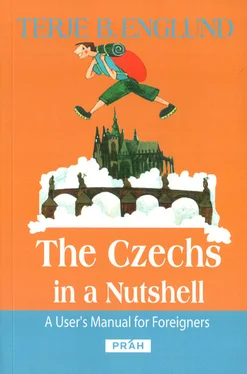


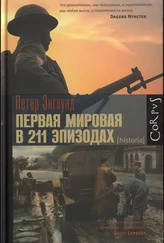


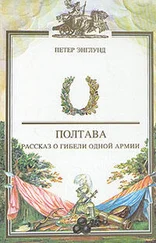

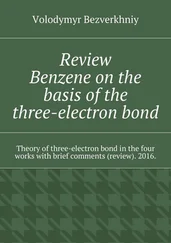
![Theresa Cheung - The Dream Dictionary from A to Z [Revised edition] - The Ultimate A–Z to Interpret the Secrets of Your Dreams](/books/692092/theresa-cheung-the-dream-dictionary-from-a-to-z-r-thumb.webp)



